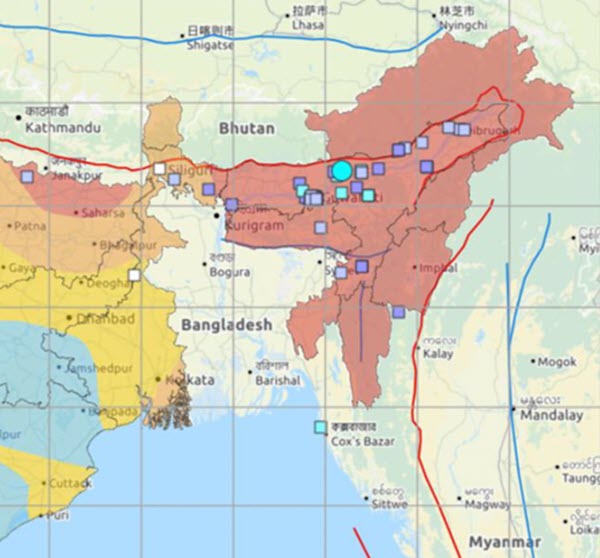
No Deaths, a Dozen Injured, Tea Factory Damage Minor
Guwahati | Assam
A strong earthquake followed by several aftershocks rattled rafters and nerves on April 28 but caused only minor damage to tea processing factories throughout the region. Several estates reported damage to outbuildings and dwellings for workers. There were 12 injuries, none life-threatening, following the 30-second shake at 7:51 am April 28.
The quake was felt throughout northeaster Assam, parts of Bihar, West Bengal, and Bangladesh. Damage was reported within a 100-kilometer radius in Sonitpur, Nagaon, and Guwahati.
“We were lucky to have got away with no injuries to employees and their dependents from member gardens,” said Bhupinder Singh, chairman of the Assam Branch India Tea Association (ITA) Zone 3.
A hill collapsed in Bhirabkund in the Udalguri district due to soil liquefaction caused by the quake and area residents were warn to be wary of land slides and damage to local bridges.
“The high-intensity earthquake early Wednesday caused damage to houses and buildings with people running out of their homes and other places in panic, obliterating social distancing and other COVID guidelines amid a raging pandemic. The massive quake has caused only light damage to buildings and there have been no fatalities reported,” writes Prof. T.G. Sitharam, director of IIT Guwahati and president of the Indian Society for Earthquake Technology.
The heritage bungalow at Durrung Tea Estate “stood firm and intact,” said Mrityunjay Jalan. At Kopati Tea Estate, Rohit Pareek said he was in the factory at the time of the quake “when everything started shaking for a good 30 seconds. Jolts were so massive that the ceiling of our packet tea house cracked immediately and we rescued our workers. There were aftershocks for one hour and when it calmed we started our factory

The National Centre for Seismology put the epicenter of the quake near Sonitpur, a “very seismically active area” along the Kopili Fault. The Kopili is a strike-slip fault aligned from northwest to southeast. The quake originated 17 kilometers underground and 43 kilometers west of Tezpur.
During the first 48 hours there were 15 aftershocks measuring 2 to 4.9 on the Richter Scale. The quake caused many fissures, exposing liquified soil within a radius of 50-70 kilometers.
Every year the Indian Plate moves roughly 5 centimeters northward, pushing under the Eurasian Plate and forming the Himalayas. The Seven Sisters (Assam, Meghalaya, Mizoram, Tripura, Nagaland, Arunachal Pradesh and Manipur) are considered by seismologists to be the sixth most earthquake-prone belt in the world.
The region’s last major quake, in July 1960, measured 6.0. The epicenter of a 5.9 quake in November 2011 was in Myanmar about 130 km from the city of Imphal, capital of the sate of Manipur. The region experienced two of its worst earthquakes in 1897 and 1950. 1897 quake measured 8.0 and Each killed 1500. The magnitude 8.6 quake in August 1950, with an epicenter in Arunachal Pradesh, killed an estimated 4,800.
Quake Damage
Share this post with your colleagues
Signup to receive Tea Biz weekly in your inbox.





